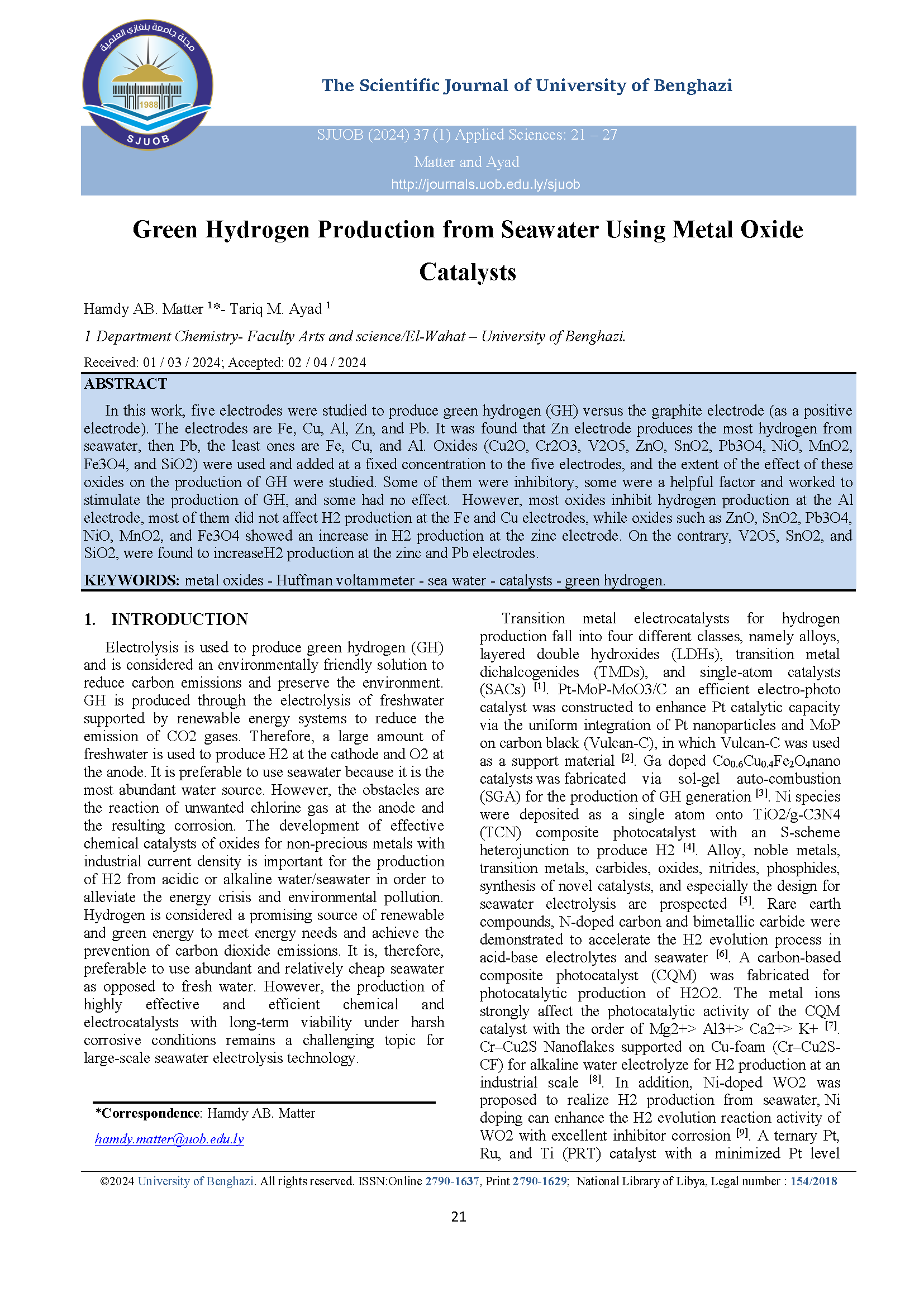Green Hydrogen Production from Seawater Using Metal Oxide Catalysts
DOI:
https://doi.org/10.37376/sjuob.v37i1.5936Keywords:
metal oxides, Huffman voltammeter, sea water, catalysts, green hydrogenAbstract
In this work, five electrodes were studied to produce green hydrogen (GH) versus the graphite electrode (as a positive electrode). The electrodes are Fe, Cu, Al, Zn, and Pb. It was found that Zn electrode produces the most hydrogen from seawater, then Pb, the least ones are Fe, Cu, and Al. Oxides (Cu2O, Cr2O3, V2O5, ZnO, SnO2, Pb3O4, NiO, MnO2, Fe3O4, and SiO2) were used and added at a fixed concentration to the five electrodes, and the extent of the effect of these oxides on the production of GH were studied. Some of them were inhibitory, some were a helpful factor and worked to stimulate the production of GH, and some had no effect. However, most oxides inhibit hydrogen production at the Al electrode, most of them did not affect H2 production at the Fe and Cu electrodes, while oxides such as ZnO, SnO2, Pb3O4, NiO, MnO2, and Fe3O4 showed an increase in H2 production at the zinc electrode. On the contrary, V2O5, SnO2, and SiO2, were found to increaseH2 production at the zinc and Pb electrodes.
Downloads

Downloads
Published
How to Cite
Issue
Section
License
Copyright (c) 2024 The Scientific Journal of University of Benghazi

This work is licensed under a Creative Commons Attribution-NonCommercial-NoDerivatives 4.0 International License.


















